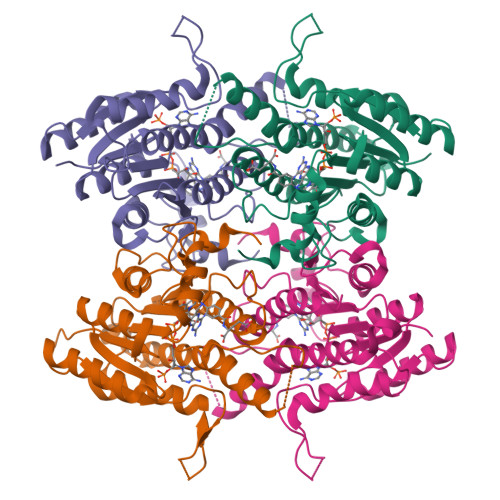Structure of pteridine reductase (PTR1) from Leishmania tarentolae.
Zhao, H., Bray, T., Ouellette, M., Zhao, M., Ferre, R.A., Matthews, D., Whiteley, J.M., Varughese, K.I.(2003) Acta Crystallogr D Biol Crystallogr 59: 1539-1544
- PubMed: 12925782
- DOI: https://doi.org/10.1107/s0907444903013131
- Primary Citation of Related Structures:
1P33 - PubMed Abstract:
The protozoan parasites Leishmania utilize a pteridine-reducing enzyme, pteridine reductase (PTR1), to bypass antifolate inhibition. The crystal structure of PTR1 from L. tarentolae has been solved as a binary complex with NADPH at 2.8 A resolution. The structure was solved by molecular-replacement techniques using the recently reported L. major PTR1 structure as a search model. Comparisons of the present structure with the L. major PTR1 allowed us to identify regions of flexibility in the molecule. PTR1 is a member of the growing family of short-chain dehydrogenases (SDR) which share the characteristic Tyr(Xaa)(3)Lys motif in the vicinity of the active site. The functional enzyme is a tetramer and the crystallographic asymmetric unit contains a tetramer with 222 point-group symmetry.
Organizational Affiliation:
Department of Molecular and Experimental Medicine, The Scripps Research Institute, 10550 North Torrey Pines Road, La Jolla, CA 92037, USA.


















